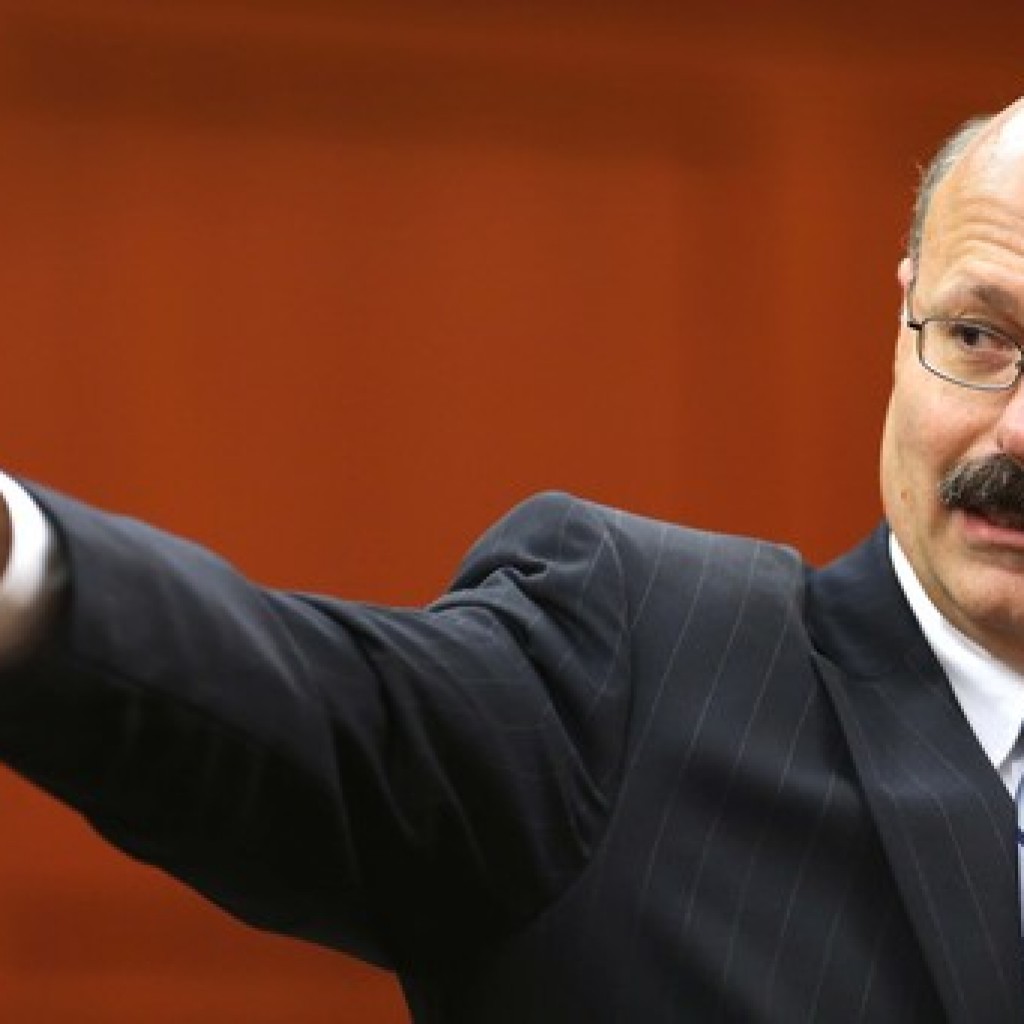
I first encountered Bernie De La Rionda almost a decade ago, not in a strictly journalistic capacity.
He was the prosecutor in a trial, which lasted the better part of a week, which involved the murder of the girlfriend of one of my best friends. The man who killed her, a 17 year old named Kimothy Simmons, stalked Sarah Whitlock after meeting her while she was jogging, and representing himself as a “police recruit” at the time they met. Simmons knocked on her apartment door one night, wearing a narcotics officer cap and a “Police” shirt.
In her apartment, he then proceeded to stab her to death. 31 stab wounds in total.
I think of her and that incident more days than not. I still live in the same area I did when it happened, and drive by her apartment complex all too often. It’s across the street from some new fashionable restaurants, and the apartment undoubtedly has been rented out many times since, with fresh coats of paint intended to obscure the institutional memory of the building.
When I talked to De La Rionda on Friday, after the First Coast Tiger Bay forum on the “pros and cons of the death penalty,” he remembered the case all too well.
It wasn’t a death penalty case; Simmons was a minor when he decided to stab a woman to death, a woman whose biggest mistake was a casual conversation with him. Simmons is in prison for life, supposedly. His baby face, his teardrop tattoo, his utter heartlessness, subsidized, for life, with taxpayer dollars.
While veterans and mothers go hungry in our streets, Simmons is kept alive by the state. Perhaps he’s getting talk therapy. Maybe he’s enjoying the new football season. Or he could be reading books.
Whatever Simmons is doing, he’s still alive. His ashes haven’t been scattered over the sea. No one has to mourn him.
So there’s my bias on the death penalty. There is literally no good done by keeping this man alive. No redemption story. No happy ending. The manchild with plucked eyebrows, pursed lips, and a teardrop tattoo killed one woman and ruined the lives of those who loved her. And despite the preponderance of evidence, he will outlive most of those whose lives he wrecked.
De La Rionda’s opponent in the debate, Kristina Musante, is a nice, well-intentioned woman who came armed with a powerpoint, full of facts about the “overuse of the death penalty” in the 4th Judicial Circuit, which she called “bad public policy.”
She estimated that $51 million could be saved if prosecutors didn’t pursue the death penalty. That money could be put into “cold cases” and “crime reduction,” and would remove the chance of “getting it wrong” and putting an innocent person on death row.
Musante finished her powerpoint. And de la Rionda, a man who was flown over, sans parents, to the United States from Cuba at the age of four, began his presentation, which sounded like nothing so much as a closing argument.
He described murders, in an expository way that wasn’t graphic in description, but was graphic nonetheless. because the subject matter was unconscionable. A guy who stabbed his victim 69 times, for example, which de la Rionda contended was “different from a regular run of the mill murder.”
And there was the guy who clocked his victim with a cinder block, and then stuffed a rag in her mouth to finish the job.
And then there was the Mayport Monster, who killed five people, got life in prison, and then did his part to reduce prison overcrowding by killing two more.
The Mayport Monster had asked for the death penalty. He didn’t get it.
The questions that de la Rionda faced at Tiger Bay were, by and large, adversarial. As you would expect. For those who haven’t had their lives impacted by the kind of murders described above, it’s easy enough to be skeptical about the reality of these actions, and the never ending ripple effects they create, long after the stories are out of the headlines and the surviving loved ones are told to move on.
Does the state have the right to be the arbiter of final justice? The moral authority? These are questions for the philosophers and those who would prefer to stand safely removed from the real immediacy of the situation and “advocate” from a moral high ground, untroubled by the non-negotiable realities of the kinds of murders that lead prosecutors to seek the death penalty in the first place.
From what I know, that moral high ground is a much better place to be than in the muck, wrestling with losing the one person who gave your life meaning.
And both of those places are better, by far, than drawing your last breaths as someone decides to plunge a knife into your chest, your legs, your neck, perhaps ignoring your screams and the terror in your eyes, or perhaps enjoying it.



